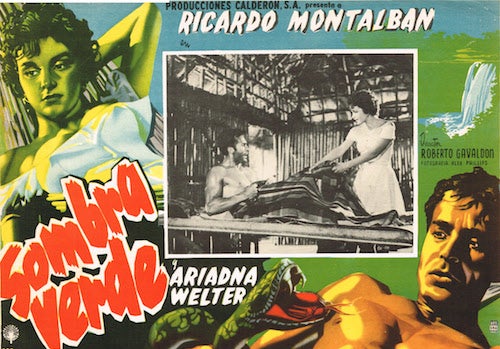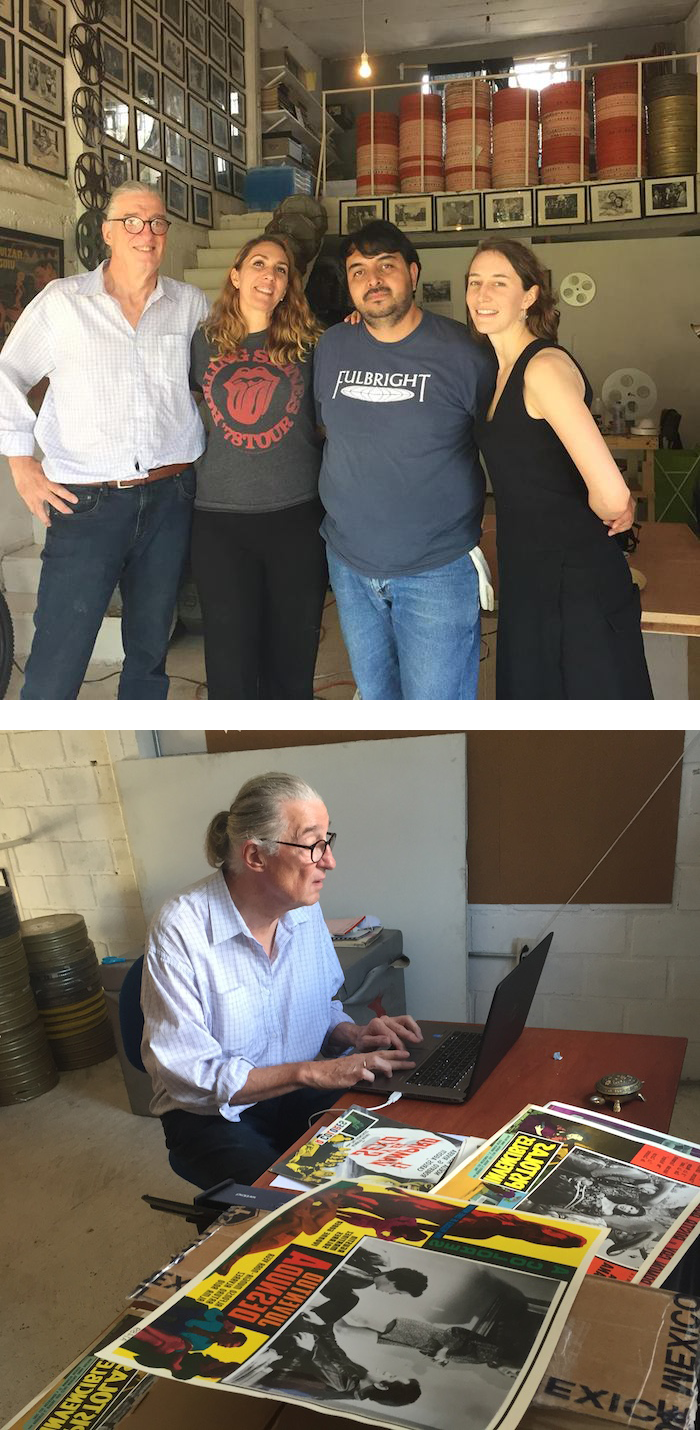
Sombra Verde (1954)
I flew down to Mexico in the first days of August to conduct research for our 2017 Pacific Standard Time: LA/LA program: Recuerdos de un cine en español: Latin American Cinema in Los Angeles, 1930-1960. My first stop was Tepoztlán, about an hour outside of Mexico City, where the archive of the Calderón Brothers, now called the Permanencia Voluntaria, is located. The Calderón Brothers were exhibitors, film producers and distributors from c.1919 to 1990. I was particularly interested in the surviving papers of the Calderóns, because they had started as exhibitors in the border areas of Chihuahua and Texas, and I was curious to know whether their influence reached as far as Los Angeles and its Spanish-language movie theaters on North Main Street.
I was greeted at the airport by Paulina Suarez, a member of our curatorial team and a Ph.D. candidate at NYU, who guided me to a bus to Tepoztlán, and suddenly I felt like I was in Luis Buñuel’s Subida al cielo [Mexican Bus Ride] (1952). Paulina has been working at Permanencia Voluntaria with its director, Viviana Garcia Besne and Michael Ramos-Araigaza, my former student in the moving image archiving program here in Los Angeles. Permanencia Voluntaria was founded two years ago after Viviana, a great-granddaughter of José Calderón, the dynasty’s founder, moved the archive to Tepoztlán. The name translates to “continuous performance,” reminding us of the early days when you could walk into the cinema anytime and leave just as easily. It is a small and still struggling archive, reliant on donations and grants, and founded of necessity, because other major film archival centers have deemed the films of the Calderón Brothers too low-brow and commercial for preservation. Given our brief to explore popular Mexican cinema in Los Angeles, this was for me the place to be.
The Calderón family connections to L.A. run deep. An older brother of José Calderón, Mauricio, operated a music store on North Main Street with a music publishing business, probably a seed for the Calderóns producing films with popular music, once sound came in. Here are some of my discoveries:
Azteca Film Distribution, the most important distributor of Latin American films to North America, was founded by José and Rafael Calderón, along with Alberto Salas Porras, its L.A. office located at 1906 Vermont Ave. We found a photo from the very early 1930s that depicted Frank Fouce and Gustavo Acosta, who was apparently a silent era partner. Acosta, who was related to the Calderóns, later worked for Columbia’s Latin American distribution office, and was probably responsible for brokering a deal for Columbia to distribute many of the Calderón films in Mexico in 1947. He was also a UCLA graduate of the university’s first generation and probably donated the funds to build the Acosta athletic center at UCLA. Frank Fouce managed many of the downtown L.A. Spanish-language cinemas, including the California theater and the still-existing Million Dollar. Much later, the company was operated by Rubén (the son of Rafael), Guillermo (the son of José) and Porras. We also found an affidavit (including a list of all films distributed by Azteca), which documents that the Calderóns were forced to sell their ownership in 1956, when the Mexican national film industry monopoly was set up.
José Calderón was also the producer of Santa (1932), the first Mexican sound film. The Calderóns are all over the photos of the Santa premiere at the Teatro California on May 20, 1932. And while the premiere was in Mexico City six weeks earlier, there is strong evidence that the opening in Mexico, as well as screenings in San Antonio and El Paso (the home of Rafael Calderón’s flagship cinema) were only organized to build up publicity for the star-studded L.A. premiere. Directed by Antonio Moreno and starring Lupita Tovar, both of whom also had substantial careers in Hollywood, Santa’spremiere drew an A-list of Hollywood personalities, including Tovar, José Mojica, Laurel and Hardy, Ramón Pereda, Julio Peña, Juan Torena, Paul Ellis and Carlos Villarías. The theater was decorated with huge portraits of Tovar, Morena and Carlos Orellana, as the crowds jockeyed to see and talk to their favorite Spanish-speaking stars, while critics in the next morning’s papers praised the film for its realism and melodrama. We also found photos of an advertising truck for Santa in L.A., as well as photos of the California marquee.
Check out the website, which has a partial listing of the films the Calderóns produced over several generations.
< Back to Archival Spaces blog






 Mobile Navigation
Mobile Navigation

